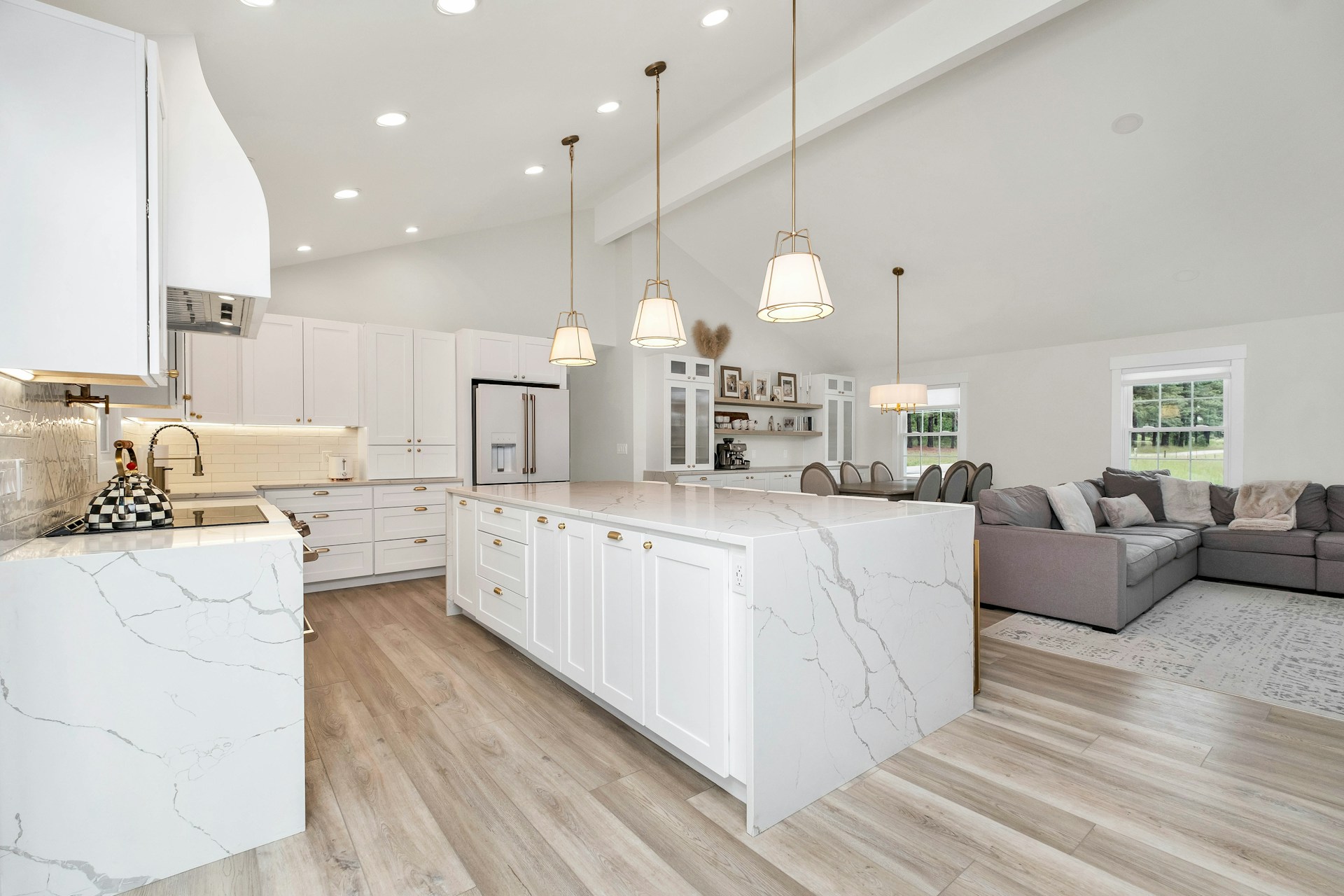As we move through 2025, home remodeling is all about making spaces smarter, more sustainable, and in tune with nature. Homeowners are looking for ways to modernize their spaces while keeping functionality and comfort at the forefront. This year, remodeling trends reflect a growing interest in using more eco-friendly materials, integrating smart technology, and creating open, versatile spaces that adapt to different needs.
Remodeling now often includes the use of sustainable resources and materials that reduce environmental impact. Smart home technology, such as automation for lighting and security, is becoming more common in making homes both efficient and convenient. Meanwhile, the concept of open living spaces is being embraced, allowing families to enjoy flexible areas that serve multiple purposes without feeling cramped.
Additionally, many homeowners are incorporating natural elements into their designs to create a connection with the outdoors. This biophilic approach not only enhances the aesthetic appeal of a home but also promotes a sense of well-being. These trends illustrate a shift towards more thoughtful and innovative designs that cater to both modern lifestyles and environmental consciousness.
Embracing Sustainable and Eco-Friendly Materials
Homeowners are increasingly looking to reduce their carbon footprint when updating their homes. One way to do this is by using sustainable and eco-friendly materials. These materials are not only great for the environment but also for creating healthy living spaces. Bamboo and reclaimed wood are popular choices because they are renewable and add a natural touch to interiors. Using recycled metal and glass as well as low-VOC (Volatile Organic Compounds) paints helps improve indoor air quality. These options minimize harmful emissions and are better for your family’s health.
There are also innovative materials that make a difference. Cork flooring is gaining traction due to its resilience and insulating properties. It’s soft underfoot and acts as a natural sound barrier. Sheep’s wool insulation is another eco-friendly option. It’s highly effective for temperature regulation and absorbs moisture, reducing the risk of mold growth.
Sustainable remodeling also involves looking beyond materials to process efficiencies. Consider energy-efficient appliances and LED lighting to decrease energy consumption. Solar panels are becoming more common, offering a renewable energy source that reduces reliance on fossil fuels. Encouragingly, tax incentives are available to support homeowners in making these green upgrades more affordable. By incorporating these materials and technologies, you contribute to a healthier home and planet.
Rise of Smart Home Technology and Automation
2025 is the year when smart home technology and automation are truly taking off. These technologies simplify daily tasks and enhance home security. With the help of smart devices, controlling your home’s environment becomes as easy as a voice command. From lighting to temperature control, everything can be managed through a smart hub or even a smartphone.
Automatic lighting systems adjust based on the time of day or your presence at home. Smart thermostats learn your schedule, ensuring your home is always at optimal comfort without wasting energy. These systems often come with compatible apps that allow homeowners to adjust settings remotely, offering convenience and energy savings.
Security features are also advancing. Smart locks and doorbell cameras provide peace of mind, allowing you to monitor who enters and exits your home. Real-time alerts can be sent to your devices, keeping you informed of any unusual activity. This increased security layer is essential for protecting your family and property.
Home assistant devices are becoming indispensable. They help with simple tasks like setting reminders, playing music, or even providing weather updates. By integrating these systems, homes become more energy-efficient, secure, and comfortable to live in. The rise of smart home technology is turning ordinary houses into connected spaces that improve our everyday lives significantly.
Open Concept Living with Multi-Functional Spaces
Open concept living continues to be a major trend for home remodeling in 2025. This design approach removes barriers like walls and doors to create a vast, flowing space that brings together the kitchen, dining, and living areas. Homeowners love this style for its spacious feel and the ease it brings to hosting gatherings or watching kids while cooking. It also allows natural light to flow through the home, making it brighter and more inviting.
Creating multi-functional spaces within an open concept floor plan increases its versatility. Furniture like fold-away tables, movable islands, and modular sofas helps to define different areas without closing them off. Consider using area rugs and strategic lighting to highlight each section of the space, enhancing its functionality while maintaining the open feel. Flexibility is key; these spaces are easily adjustable to suit various needs or occasions.
The open concept is also advantageous for families that require flexible space usage. For example, a corner of the living area might double as a home office or study nook. This adaptability improves how you use your space daily, merging leisure, work, and family time into a cohesive living area. By renovating with an open concept in mind, you maximize your home’s potential and create an environment that can adapt to your lifestyle.
Incorporating Natural Elements and Biophilic Design
Biophilic design is gaining momentum as more homeowners seek to incorporate nature into their living spaces. This trend connects people with the natural environment by bringing elements like plants, natural light, and organic materials into the home. The goal is to boost well-being and create a soothing atmosphere that mimics outdoor spaces.
You can start this transformation by adding houseplants of various sizes and types. Plants improve air quality and add a lush, vibrant feel to any room. Select plants that thrive in your home environment, considering light levels and care requirements. Vertical gardens and hanging plants are excellent choices for adding greenery without using floor space.
Natural materials like wood, stone, and bamboo contribute to a biophilic design by introducing textures and tones found in nature. Use these materials in flooring, countertops, or accent decorations to enhance the connection with the outdoors. Large windows that invite sunlight and offer views of nature further reinforce this design approach. Skylights or glass doors can open up spaces to more natural light, enriching the home’s ambiance and reducing energy use.
By weaving natural elements into your home, you create a serene retreat that promotes relaxation and harmony. This design helps reduce stress and enhances your living environment, making it a popular choice for homeowners looking to balance modern living with the tranquility of nature.
Conclusion
Exploring the latest home remodeling trends can drastically improve your living environment and add value to your home. Open concept living areas and biophilic design are just two examples of how you can transform your space to better align with your lifestyle and personal preferences. These trends not only enhance your home’s function but also bring a fresh, modern feel that resonates with many homeowners looking for improvement and modernization.
Whether you’re planning a full-scale renovation or a few strategic updates, choosing trends that match your needs can make a world of difference. Emphasizing flexibility, natural elements, and smart designs ensures that your home remains comfortable and functional no matter how lifestyles evolve. It’s about building a space that works for you and enhances your well-being daily.
Contact Top Gun to start transforming your spacce with the latest home remodeling trends. Our team can help bring your vision to life, tailoring every aspect of your home to your needs. Let us help you create a beautiful, functional space that’s ready for 2025 and beyond.

